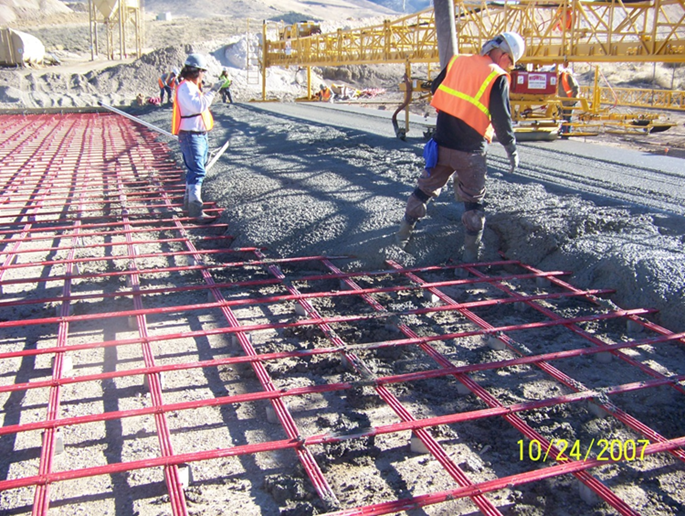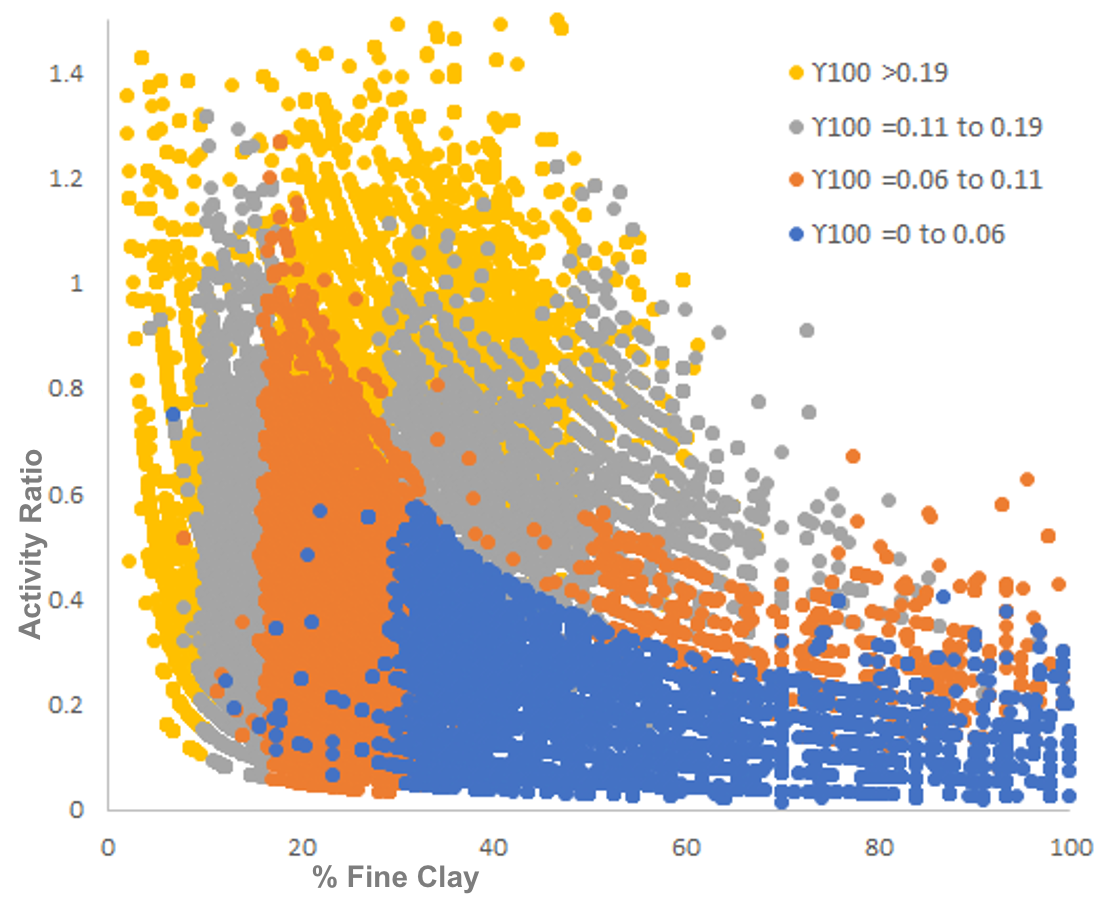4:00 PM
Speaker Presentations
See below for more information about this month's speakers.
6:00 PM
FPA Annual Meeting
Please join us for our annual meeting and the introduction of incoming Board of Directors.
6:30 PM
Cash Bar and Mixer
Enjoy an opportunity to meet and network with other FPA members. Beer, wine, and sodas will be available for purchase.
7:00 PM
Annual Dinner
Join us for our annual dinner celebrating the end of another year. Members enjoy a complimentary meal and non-members can purchase their meal (vegetarian and gluten-free options available).
 4:00 PM (1.0 PDH)
4:00 PM (1.0 PDH)
Post-Tensioned Concrete Building Structures: Important Design Considerations
Presented by Mr. Tim D. Christle, P.E. with Post-Tensioning Institute
ABSTRACT: An overview of important issues to consider in the design and construction of post-tensioned concrete building structures will be discussed. Highlights include common field issues for unbonded post-tensioning in elevated structures as well as slab-on-ground; the importance of certification in the manufacture and installation of post-tensioning systems; best practices for plans and specifications for PT buildings; and considerations for retrofitting existing PT structures.
BIO: Mr. Tim D. Christle, P.E., has 31 years of diverse experience in the A/E/C industry. His role at PTI focuses on development of standards, specifications and other publications plus training, education, promotion and research all aimed at advancing the PT industry. His background includes structural engineering, parking consulting plus business development and marketing for a post-tensioning systems supplier as well as a structural concrete subcontractor. His career has revolved around post-tensioned concrete structures every step of the way. Tim is a graduate of Purdue University, NCEES certified and is a registered professional engineer (structural) in five states.
 5:00 PM (1.0 PDH)
5:00 PM (1.0 PDH)
Prediction of Potential Vertical Movement
Presented by Robert L. Lytton, Ph.D., P.E., F.FPA Professor of Civil Engineering at Texas A&M University, College Station TX, Tel. No. (979) 845-9964, and Sajib Saha, Ph.D., Post-doctoral Research Associate, Texas A&M Center for Infrastructure Renewal, College Station, Texas, Tel, No. (864) 986-2451.
BIOS: Dr. Lytton is an FPA Fellow, FPA Structural Committee Member, Professor of Civil Engineering in the Zachry Civil Engineering Department of the Texas A&M University, and a Licensed Professional Engineer in Texas. He earned his BSCE in 1960 and his MSCE in 1961, both from University of Texas, Austin. He then served two years active duty in the US Army as a construction engineer followed by two years in Houston working for a consulting engineer. Then he went back to UT-Austin and completed his Ph.D. in Civil Engineering in 1967. After teaching at UT and spending time in Australia, Dr. Lytton came to Texas A&M in 1971 where he taught and supervised undergraduate and graduate students in the Zachry Civil and Environmental Engineering Department until his retirement in August, 2021.
Dr. Lytton is internationally recognized for his work in the study of the effect of expansive soil on foundations and pavements, having given presentations on the subject worldwide. ASCE’s Transportation and Development Institute (T&DI) bestowed its 2017 Francis C. Turner Award on Dr. Lytton for his advancements and innovation of pavements design and construction. He has over 500 publications to his credit, of which more than 200 are in refereed journals. Dr. Lytton has selflessly presented to this FPA forum on an annual basis at least 18 times and he has also presented in past FPA seminars.
Dr. Saha has his BSCE from the Bangladesh University of Engineering and Technology in 2009 and his MSCE from Clemson University in 2013. He completed his Ph.D. degree at Texas A&M University in 2019. His dissertation was on “The Characterization of Unbound and Stabilized Materials and Improved Consideration of their Effects on Pavement Performance.” He is currently a Postdoctoral Research Associate with the Center for Infrastructure Renewal at Texas A&M University.
ABSTRACT: The Potential Vertical Rise (PVR) method was originally developed by Chester McDowell for TxDOT and published in a 1956 document in the Highway Research Record (since re-named the Transportation Research Record). Its purpose was a design index for predicting future heave activity of pavement. More than six decades later, after minor revisions, geotechnical engineers still widely use the PVR method in the design of roadways in Texas and other states; many engineers have since adapted this pavement design procedure to the design of foundations for buildings, something never intended by McDowell. While the PVR method has always allowed quick results by using input from minimal field and lab test data, the heave values the PVR method produces have been found to be inaccurate such that engineers using it today often add their own fudge factors in making heave predictions.
Dr. Lytton and his former student, Dr. Sajib Saha, will present a proposed replacement method to PVR for use in the US, which was developed by Texas A&M University (TAMU). The proposed method called Potential Vertical Movement (PVM) is so named because, while the PVR method only computes the propensity for heave (upward movement) in expansive soil, the PVM method computes the probable sum of heave and shrinkage (upward and downward movement).
Researchers at TAMU, working under Professors Robert L. Lytton and Dallas N. Little have relied upon the field and lab test data reported by the US Department of Agriculture, Natural Resources Conservation Service (USDA/NRCS) soil surveys in developing this PVM method, utilizing NRCS' entire database of more than 200,000 sets of soils data. By comparison, the number of NRCS data sets used to develop PTI's foundation design method only included about 7,000 data sets. This means that this design PVM method fully incorporates the data needed by the engineer in PVM design, including the climatic Thornthwaite Moisture Index, Atterberg limits, grain size (both sieve and hydrometer testing), suction-vs-volume change curves, and other historical data from the NRCS; and since the NRCS' data sets come from all 50 states, Puerto Rico, and the US Virgin Islands, in addition to being quick and economical to use, this PVM method will also be applicable for use on sites well beyond Texas. As with the PVR method, this PVM method requires minimal site specific soil testing. A single chart that summarizes all of this gives the volume change coefficient in three soil property zones as they vary with percent fine clay and Activity Ratio (PI / (% fine clay)). Finally, a color-coded GIS chart of the PVM as it varies over the entire US was developed.
In vetting its PVM method, TAMU used the method to predict the pavement roughness (in inches/mile) for multiple existing U.S. roads. Comparing its predicted PVM results with actual recorded performance of the roads, TAMU found the PVM method predicted the pavement performance with a correlation coefficient (R) of 0.74, where R=1.0 is a perfect correlation. Comparing with the PVR method, TAMU found PVR's correlation with the roughness index for the same roads gave an R-value of -0.41, a negative number, a poor correlation compared to using PVM. The PVR was correlated with the PVM on the same pavement sections with an R-Squared value of 0.02. In addition, vertical foundation movements predicted by the PVM in the U.S. and Australia are compared with actual field measurements.
Parts of the data forming the bases of this PVM method had already been developed by Dr. Lytton and TAMU and were presented by Dr. Lytton to the FPA as GIS Map of Equilibrium Suction as Controlled by the Soil and Vegetation (2018) and Design of Drilled Shafts in Expansive Soils (2016), the latter of which resulted in FPA's peer reviewed 2017 Document no. FPA-SC-16-0 that Dr. Lytton co-authored as a member of the FPA's Structural Committee.
WHO SHOULD ATTEND? Civil engineers, geotechnical engineers, foundation design engineers, roadway engineers, forensic engineers, developers, building contractors, city, county and state engineers, and others interested in a more accurate and economical design method for determining Potential Vertical Movement (PVM) (both upward and downward movements) of foundations and pavements.
PAST FPA PRESENTATIONS: To read summaries of previous FPA presentations by Dr. Lytton, please click on the dates below:
December 2019 – The Interplay among Soil Condition, Transportation Network and Flood Control Network during Flooding Events
December 2018 – GIS Map of Equilibrium Suction as Controlled by the Soil and Vegetation
December 2017 – Designing Bases and Subgrades for Better Pavement Performance
December 2016 – Design of Drilled Shafts in Expansive Soils. Part 3
December 2015 – Edge Cracking in Pavements on Expansive Soils: Causes and Countermeasures
December 2014 – Methylene Blue Test of Soil Properties: A Rapid and Accurate Field Test
December 2013 – Design of Drilled Shafts in Expansive Soils. Part 2
December 2012 – Design of Pavements on Expansive Clay Subgrades
December 2011 – Design of Drilled Shafts in Expansive Soils
December 2010 – Effects of Trees on Foundations
December 2009 – Contrasting Design Approaches for Slabs-on-Ground and Raised Floor Foundations on Expansive Soils
December 2008 – How to use the PTI-3rd Edition to Design Foundations in Houston
December 2007 – Design of Structures to Resist the Pressures and Movements of Expansive Soils
December 2006 – Re-Visitation of Expansive Soils
December 2004 – Case Studies of Residential Foundation Movements in Southern Houston Area
August 2003 – How to Run Soil Suction Tests
August 2002 – Shallow Slope Failures and Suction from Vegetation
August 2001 – Methods to Aid Structural and Geotechnical Engineers in Designing Slab-on-Grade